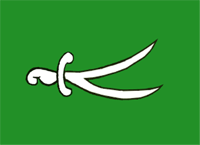Banganapalle State facts for kids
Banganapalle State was a special kind of kingdom in India when the British ruled. These kingdoms were called princely states. They had their own rulers but were also connected to the British government.
In 1948, after India became independent, the ruler of Banganapalle decided to join the new Republic of India. This meant Banganapalle became part of India. It was then added to the Kurnool District in what was known as the Madras Presidency.
Contents
Banganapalle State: A Glimpse into India's Past
Banganapalle State was a small but important part of India's history. It existed for many years under its own rulers. Understanding Banganapalle helps us learn about how India changed over time.
What Was a Princely State?
Before India became fully independent, it was made up of many different areas. Some of these areas were directly ruled by the British. Others were called princely states. These states had their own Indian rulers, often called Maharajas or Nawabs.
The rulers of princely states managed their own local affairs. They had their own laws and collected taxes. However, they had to accept the British as the main power. The British looked after their defense and foreign relations. This system allowed many traditional kingdoms to continue existing.
The Story of Banganapalle
Banganapalle State had a long history before it joined independent India. It was one of many such states in the region. Its story is part of the bigger picture of India's past.
How Banganapalle Was Formed
Banganapalle State was established a long time ago, in 1665. This was during a period when many new kingdoms and territories were forming across India. The state grew and developed over centuries. It maintained its unique identity and traditions.
Rulers of Banganapalle
The rulers of Banganapalle State belonged to a Shia Muslim dynasty. They were often known by the title of Nawab. These Nawabs governed the state for generations. They were responsible for the well-being of their people. They also managed the state's resources and its relationship with other powers.
Joining Modern India
After World War II, the British decided to leave India. This led to India becoming an independent nation in 1947. A big question then arose for the princely states. What would they do?
Banganapalle's Decision in 1948
When India became independent, princely states had a choice. They could join India, join Pakistan, or try to remain independent. Most states chose to join either India or Pakistan.
In 1948, the ruler of Banganapalle State decided to join the Republic of India. This was a major step. It meant that Banganapalle would no longer be a separate princely state. Instead, it became a part of the larger Indian nation. After joining, Banganapalle was added to the Kurnool District. This district was part of the Madras Presidency at the time. The Madras Presidency was a large administrative area under British rule. It later became part of the modern state of Andhra Pradesh.
Images for kids
-
This 1913 map shows the Madras Presidency and where Banganapalle State was located.



